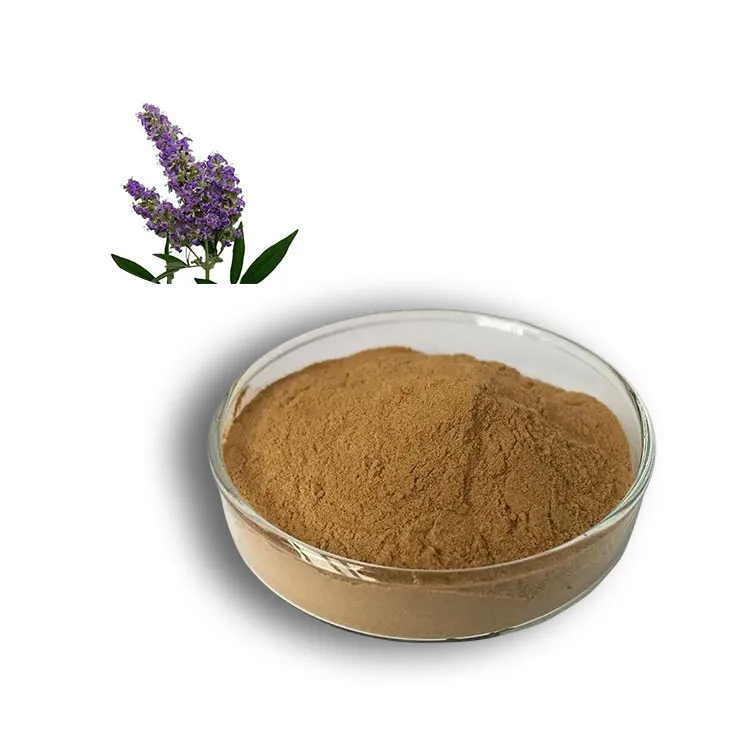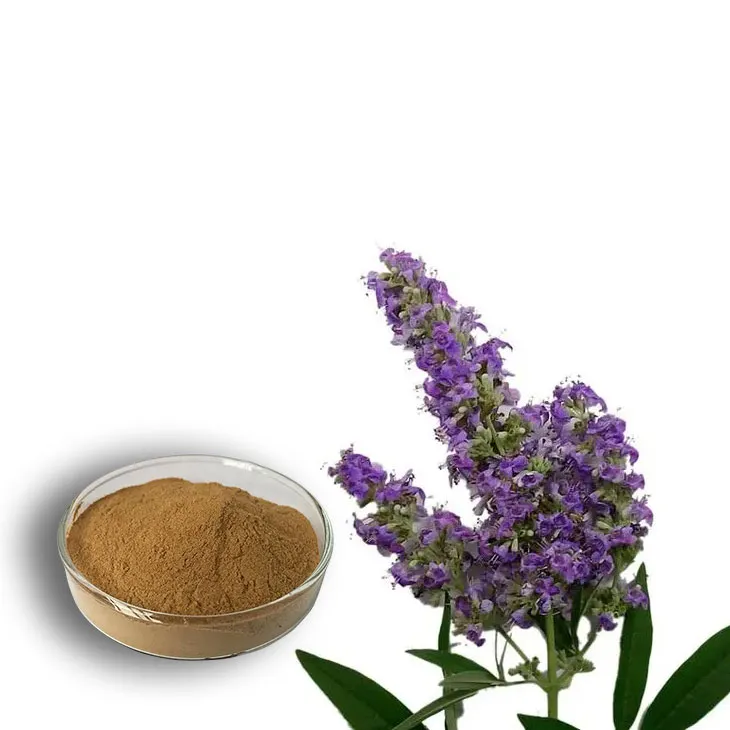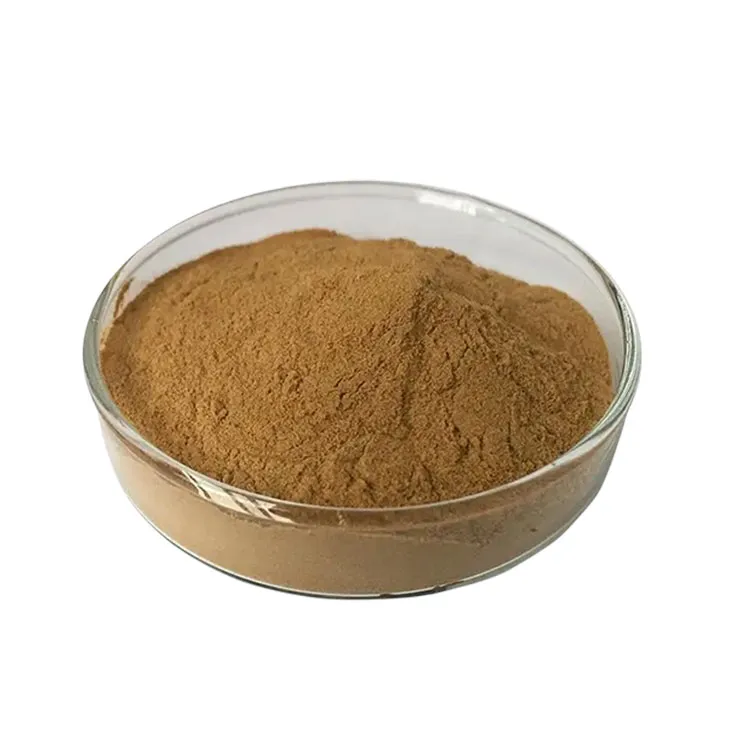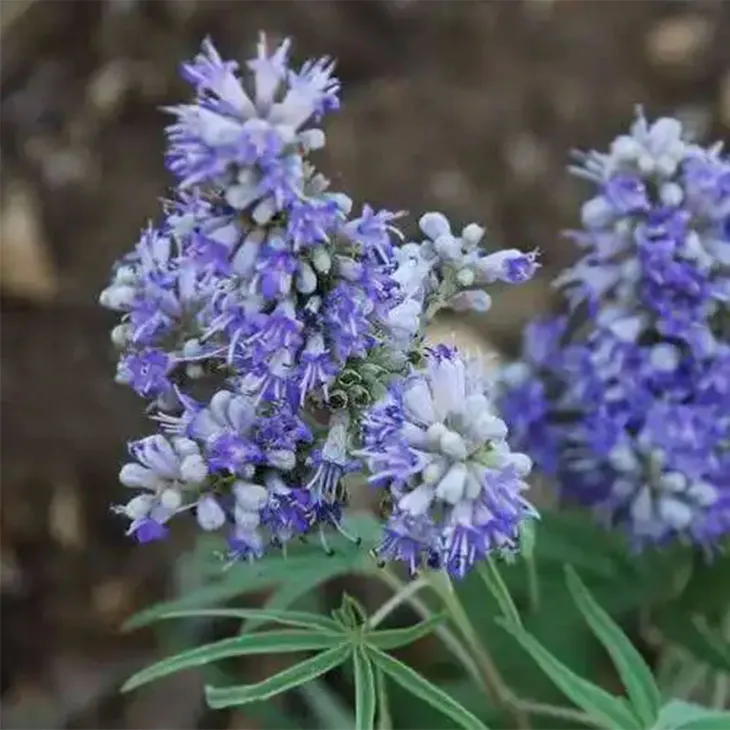- 0086-571-85302990
- sales@greenskybio.com
The process of extracting vitexin from chasteberry extract.
2024-11-30

1. Introduction
Chasteberry Extract is known to be rich in various bioactive compounds, and vitexin is among the most significant ones. Vitexin has been associated with numerous potential health benefits, such as antioxidant, anti - inflammatory, and neuroprotective properties. Thus, the extraction of vitexin from Chasteberry Extract has attracted much attention in the fields of medicine, food, and cosmetics. However, the extraction process is not straightforward and requires a series of carefully designed steps to ensure the high - quality isolation of vitexin.

2. Raw Material Selection
The first step in the extraction process of vitexin from Chasteberry Extract is the careful selection of the raw material. Quality and purity are of utmost importance at this stage.
2.1 Source Considerations
Chasteberries should be sourced from reliable suppliers. The origin of the berries can significantly impact their chemical composition. For example, berries grown in different geographical regions may have varying levels of vitexin due to differences in soil composition, climate, and agricultural practices. It is essential to choose chasteberries from regions known for producing high - quality berries with consistent chemical profiles.
2.2 Harvesting Time
The time of harvesting also plays a crucial role. Chasteberries should be harvested at the optimal stage of maturity. If harvested too early, the berries may not have fully developed their bioactive compounds, including vitexin. On the other hand, if harvested too late, there may be a degradation of some components. Therefore, careful monitoring of the growth cycle and determination of the ideal harvesting time are necessary.
2.3 Post - Harvest Handling
After harvesting, proper post - harvest handling is essential to preserve the quality of the chasteberries. This includes immediate cleaning to remove any dirt, debris, or damaged berries. The berries should then be dried or stored under appropriate conditions to prevent spoilage and the loss of bioactive compounds. Any improper handling at this stage can lead to a decrease in the final yield and quality of vitexin in the extraction process.

3. Solvent Extraction
Once the high - quality chasteberry raw material has been selected, the next step is solvent extraction. Solvent extraction is a fundamental method for isolating the components from the chasteberry extract, including vitexin.
3.1 Selection of Solvents
Choosing the appropriate solvent is critical. Different solvents have different solubilities for various components in the chasteberry extract. Commonly used solvents include ethanol, methanol, and water - based solvents. Ethanol is often a popular choice due to its relatively good solubility for many bioactive compounds and its safety for subsequent handling and purification steps. Methanol, while also effective in dissolving components, requires more careful handling due to its toxicity. Water - based solvents can be used in combination with other solvents or in specific extraction techniques, especially when targeting water - soluble components of the extract.
3.2 Extraction Conditions
Besides solvent selection, the extraction conditions also need to be optimized. This includes factors such as temperature, extraction time, and the ratio of solvent to raw material.
- Temperature: The extraction temperature can affect the solubility of vitexin and other compounds. Generally, a moderate temperature is preferred. Higher temperatures may increase the solubility but can also lead to the degradation of some heat - sensitive components. For example, temperatures between 40 - 60°C are often considered for ethanol - based extractions.
- Extraction Time: The extraction time should be sufficient to ensure the maximum dissolution of vitexin into the solvent but not so long that it leads to the extraction of unwanted impurities. Typically, extraction times can range from a few hours to overnight, depending on the nature of the raw material and the solvent used.
- Solvent - to - Raw Material Ratio: The ratio of solvent to raw material is an important parameter. A higher solvent - to - raw material ratio may increase the yield of vitexin extraction, but it also increases the cost and the volume of the extract to be processed in subsequent steps. A balance needs to be struck, and ratios such as 10:1 (solvent:raw material) are often explored in initial experiments.
3.3 Multiple - Step Extraction
In some cases, a single - step extraction may not be sufficient to extract all the available vitexin from the chasteberry extract. Multiple - step extraction can be employed. For example, a first extraction with a relatively small amount of solvent can be followed by a second extraction using the same or a different solvent. The extracts from each step can then be combined for further processing, which can potentially increase the overall yield of vitexin.

4. Separation Techniques
After solvent extraction, the resulting extract contains not only vitexin but also other components from the chasteberry. Therefore, separation techniques are required to isolate vitexin. Chromatography is one of the most effective separation methods in this context.
4.1 Column Chromatography
Column chromatography is a widely used technique. It involves packing a column with a stationary phase, such as silica gel or a resin, and passing the extract through the column. Different components in the extract will interact differently with the stationary phase based on their physical and chemical properties, resulting in their separation.
- Stationary Phase Selection: The choice of stationary phase depends on the nature of the components to be separated. For example, silica gel is suitable for separating compounds based on their polarity. If the extract contains polar and non - polar components, silica gel can effectively separate them. Resins can also be used, especially for ion - exchange chromatography when the components have different ionic properties.
- Mobile Phase Optimization: The mobile phase, which is the solvent that moves through the column, also needs to be optimized. Different solvents or solvent mixtures can be used as the mobile phase. For example, a gradient of solvents can be applied, starting with a less polar solvent and gradually increasing the polarity. This can help in the sequential elution of different components from the column, allowing for the separation of vitexin from other substances.
4.2 High - Performance Liquid Chromatography (HPLC)
HPLC is a more advanced form of chromatography that offers higher resolution and faster separation. It is particularly useful for the separation of vitexin from complex mixtures in the chasteberry extract.
- Column and Mobile Phase: In HPLC, specialized columns are used, such as reversed - phase columns. The mobile phase is carefully selected and often consists of a mixture of water and an organic solvent, such as acetonitrile. The ratio of these components can be adjusted to optimize the separation of vitexin. For example, a gradient of water - acetonitrile from 90:10 to 10:90 can be used to elute different components at different times.
- Detection Systems: HPLC is usually equipped with a detection system, such as a UV - Vis detector. Vitexin has a characteristic absorption wavelength in the UV - Vis range, which can be used to detect and quantify its presence in the eluate. This allows for the accurate determination of the amount of vitexin separated from the extract.

5. Purification Steps
After separation, the obtained vitexin may still contain some impurities, and thus, purification steps are crucial to obtain high - purity vitexin. Multiple purification methods may be combined to achieve the best results.
5.1 Recrystallization
Recrystallization is a simple yet effective purification method. It involves dissolving the impure vitexin in a suitable solvent at an elevated temperature and then allowing the solution to cool slowly. As the solution cools, pure vitexin crystals will form, while the impurities will remain in the solution. The choice of solvent for recrystallization is important. Solvents with a good solubility for vitexin at high temperatures but a relatively low solubility at low temperatures are preferred. For example, ethanol - water mixtures can be used for the recrystallization of vitexin.
5.2 Preparative Chromatography
Preparative chromatography is similar to the separation chromatography techniques mentioned earlier but is carried out on a larger scale for purification purposes. It can further separate any remaining impurities from the vitexin obtained from the initial separation steps.
5.3 Ultrafiltration
Ultrafiltration is a membrane - based separation technique. It can be used to remove macromolecular impurities from the vitexin solution. Ultrafiltration membranes with a specific molecular weight cut - off are selected based on the size of the vitexin molecule and the impurities to be removed. For example, if there are large proteins or polysaccharides in the solution, an ultrafiltration membrane with an appropriate molecular weight cut - off can be used to retain these impurities while allowing the vitexin to pass through.
6. Quality Control
Throughout the extraction process of vitexin from chasteberry extract, quality control is essential to ensure the yield and quality of vitexin.
6.1 Chemical Analysis
Chemical analysis methods are used to determine the purity and identity of the extracted vitexin.
- Spectroscopic Methods: Spectroscopic techniques such as UV - Vis spectroscopy, infrared spectroscopy (IR), and nuclear magnetic resonance spectroscopy (NMR) can be used to identify the functional groups and the overall structure of vitexin. UV - Vis spectroscopy can be used to confirm the presence of vitexin based on its characteristic absorption spectrum. IR spectroscopy can provide information about the chemical bonds in the molecule, and NMR spectroscopy can give detailed information about the atomic connectivity and the three - dimensional structure of vitexin.
- Chromatographic Analysis: Chromatographic methods, especially HPLC, can be used not only for separation but also for quantitative analysis of vitexin. By comparing the peak area of vitexin in the chromatogram with a standard, the concentration of vitexin in the extract can be determined accurately.
6.2 Yield Calculation
The yield of vitexin extraction is an important parameter to evaluate the efficiency of the extraction process. It is calculated by comparing the amount of vitexin obtained at the end of the process with the amount of vitexin theoretically present in the original chasteberry raw material. The formula for yield calculation is: Yield (%)=(Amount of extracted vitexin / Theoretical amount of vitexin in raw material)×100. By carefully monitoring the yield at each step of the extraction process, potential problems can be identified and the process can be optimized.
7. Conclusion
The extraction of vitexin from chasteberry extract is a complex process that involves multiple steps, from raw material selection to purification and quality control. Each step is crucial and requires strict control of various parameters. By following a well - designed extraction process, high - quality vitexin can be obtained, which can then be used in various applications in the fields of medicine, food, and cosmetics, contributing to the development of products with potential health - promoting benefits.
FAQ:
What are the key factors in selecting the raw material of holy basil extract for vitexin extraction?
The key factors in selecting the raw material of holy basil extract for vitexin extraction include factors like the origin of the holy basil, its growth conditions, and the harvesting time. Holy basil from a clean and unpolluted environment is preferred. Also, the correct harvesting time ensures that the plant contains an appropriate amount of vitexin. If harvested too early or too late, the content of vitexin may be affected. The quality and purity of the raw material are directly related to the final yield and quality of the extracted vitexin.
Which solvents are commonly used in the solvent extraction step for vitexin extraction?
Commonly used solvents in the solvent extraction step for vitexin extraction include ethanol and methanol. These solvents are effective in dissolving the components in the holy basil extract. Ethanol is often preferred as it is relatively safe and can dissolve a wide range of bioactive compounds. The choice of solvent also depends on factors such as the solubility of vitexin in the solvent, the cost of the solvent, and the ease of subsequent separation steps.
How does chromatography work in separating vitexin from other substances in the holy basil extract?
Chromatography works based on the different physical and chemical properties of vitexin and other substances in the holy basil extract. For example, in column chromatography, the extract is passed through a column filled with a stationary phase. Different substances interact differently with the stationary phase and the mobile phase (the solvent). Vitexin, due to its unique molecular structure and properties such as polarity and size, will move through the column at a different rate compared to other substances. This allows for the effective separation of vitexin from the rest of the components in the extract.
Why are purification steps crucial in obtaining high - purity vitexin?
Purification steps are crucial in obtaining high - purity vitexin because the initial extract contains a mixture of various substances. Even after separation techniques like chromatography, there may still be some impurities present. These impurities can affect the quality and effectiveness of the vitexin. High - purity vitexin is required for accurate scientific research, pharmaceutical applications, and other uses. Purification helps to remove any remaining contaminants and ensures that the final product is of a consistent and high quality.
What parameters need to be strictly controlled during the entire vitexin extraction process?
During the entire vitexin extraction process, several parameters need to be strictly controlled. These include the temperature during solvent extraction and purification steps, as different temperatures can affect the solubility and stability of vitexin and other substances. The pH of the solvent is also important, as it can influence the chemical reactions and interactions during the extraction process. The flow rate in chromatography, if applicable, needs to be controlled to ensure proper separation. Additionally, the concentration of the extract and the ratio of solvent to extract are parameters that need careful consideration to optimize the yield and quality of vitexin.
Related literature
- Isolation and Characterization of Vitexin from Holy Basil: A Review"
- "The Extraction and Purification of Bioactive Compounds: Focus on Vitexin from Holy Basil"
- "Advances in the Extraction of Vitexin from Plant Extracts: The Case of Holy Basil"
- ▶ Hesperidin
- ▶ citrus bioflavonoids
- ▶ plant extract
- ▶ lycopene
- ▶ Diosmin
- ▶ Grape seed extract
- ▶ Sea buckthorn Juice Powder
- ▶ Beetroot powder
- ▶ Hops Extract
- ▶ Artichoke Extract
- ▶ Reishi mushroom extract
- ▶ Astaxanthin
- ▶ Green Tea Extract
- ▶ Curcumin Extract
- ▶ Horse Chestnut Extract
- ▶ Other Problems
- ▶ Boswellia Serrata Extract
- ▶ Resveratrol Extract
- ▶ Marigold Extract
- ▶ Grape Leaf Extract
- ▶ blog3
- ▶ blog4
-
有机金银花花粉澳大利亚
2024-11-30
-
Chinese stevia extract powder manufacturers.
2024-11-30
-
Chinese Yohimbe Bark Extract Suppliers.
2024-11-30
-
Chinese Rutin Factories.
2024-11-30
-
The Pure Astaxanthin Most Worth Buying.
2024-11-30
-
Nature's Bounty Nettle Leaf Extract.
2024-11-30
-
Super Essence of Natural Lotus Leaf Extract.
2024-11-30
-
Chinese Sea - buckthorn Oil Manufacturers.
2024-11-30
-
Grapefruit Seed Extract Powder
2024-11-30
-
Konjac Powder
2024-11-30
-
Almond Extract Powder
2024-11-30
-
Panax Ginseng Leaf Extract
2024-11-30
-
Buckthorn bark extract
2024-11-30
-
Bayberry Extract
2024-11-30
-
Baicalin
2024-11-30
-
Camu Camu Extract
2024-11-30
-
Troxerutin
2024-11-30
-
Eucommia Ulmoides Extract
2024-11-30





















